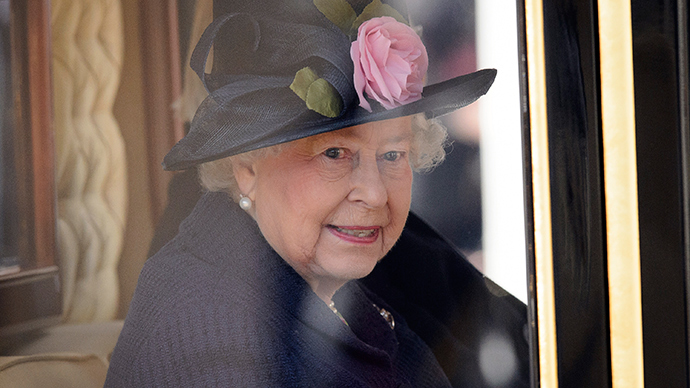Project fear: Queen’s ‘foreboding’ Scottish independence plea strategically crafted by Whitehall

Downing Street and senior civil servants were so fearful that Scotland’s independence referendum could have sparked the breakup of the UK that they requested the Queen to publicly intervene in the closing days of the campaign, a Whitehall source says.
The intervention by Queen Elizabeth II, 88, was scrupulously crafted by her private secretary and Britain’s chief civil servant, a Guardian report revealed Wednesday.
The delicately worded plea was constructed in the final phase of the Scottish independence campaign, as Downing Street faced what a senior Whitehall source told the paper was a “meltdown.” Fears ran high in Westminster as polls revealed amplifying support for the pro-independence camp, the source said.
Behind-the-scenes discussions between Britain’s Cabinet Secretary Sir Jeremy Heywood and the Queen’s private secretary Sir Christopher Geidt led to the Queen’s rare public plea, the Guardian reports.
Four days prior to the September 18 referendum, the influential Monarch pleaded with Scots to “think very carefully” on their way to the ballot box.

A high-level Whitehall source who spoke exclusively to the paper said the government hoped the tense negotiations that preceded the Queen’s cautionary words would serve as a warning to Scots they faced a decision “filled with foreboding.”
The Whitehall official’s disclosure echoed criticism directed at the British establishment regarding “Project Fear,” as it was dubbed by advocates of Scottish independence.
The strategic project was characterized by a ferocious media campaign, and relentless fearmongering stemming from the City of London and Westminster’s political elite. But few expected its tendrils to infiltrate Buckingham Palace.
As the Scottish independence campaign drew to a close, the Queen’s unusual disclosure came as a surprise to many who noted her mostly impartial 62-year reign.
Referencing the prospect of Scottish independence while addressing a well-wisher after Sunday service near her historic Balmoral estate in northwest Scotland, the Queen said: “Well, I hope people will think very carefully about the future.”
A seamless design
The strategic intervention was concocted by senior civil servants following Prime Minister David Cameron’s growing concerns the pro-independence Yes camp were gaining an ominous degree of ground in the final stretch of the campaign.
As the countdown to the referendum progressed, Whitehall figures allegedly told Buckingham Palace that a few careful words offered by the Queen would help matters.

As part of this plan, Geidt and Heywood are thought to have devised the phrase she later uttered. While shrouded in a veil of neutrality, the words ultimately indicate the Queen's support for the union.
The Guardian’s Whitehall source told the paper the intervention was meticulously calibrated.
“She knew exactly what she was doing, which is, there are two possible responses on the referendum. Either one, you buy into this is a fantastic festival of democracy, or two, you suggest this is a decision filled with foreboding.”
“So by saying I hope people will think carefully you imply the second … Without her taking a side, it cast just the right element of doubt over the nature of the decision.”
Advocates of Scottish independence claim “Project Fear” was a scrupulously designed establishment scheme created to ensure the union remained intact.
Whether the Queen’s intervention was an explicit extension of this pro-union strategy is a matter of conjecture. But the possibility has not been ruled out.
The No campaign’s relentless forecasts of economic peril, dwindling national security, an EU membership in jeopardy, and ruptured NATO relations ultimately overpowered the pro-independence movement’s messages of positivity, hope and empowerment. Many argue “Project Fear” was central to this.
In the wake of a referendum that almost terminated a 307-year-old political union, Westminster still faces many challenges.
The Yes campaign’s vision of Scotland as a Scandinavian-style state characterized by inclusivity, egalitarianism, nuclear disarmament and clean energy has been denounced by critics as utopian. However, an appetite for independence remains rife across many parts of Scotland and is unlikely to wane.
Buckingham Palace declined to comment on Geidt and Heywood’s alleged discussions concerning the Queen’s intervention.
A Cabinet Office spokeswoman also declined to comment, emphasizing the body does not publicly discuss correspondence “between the Queen’s private secretary and civil servants.”












